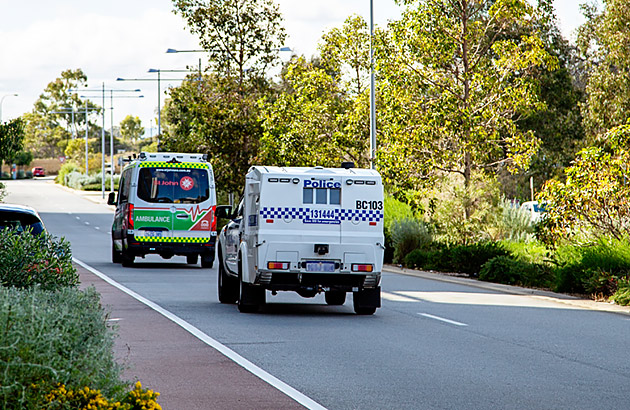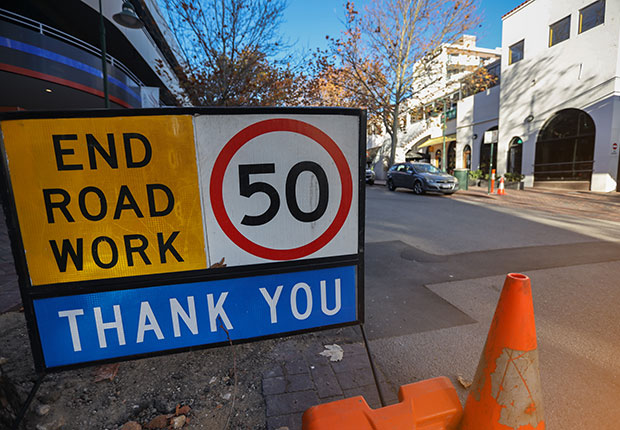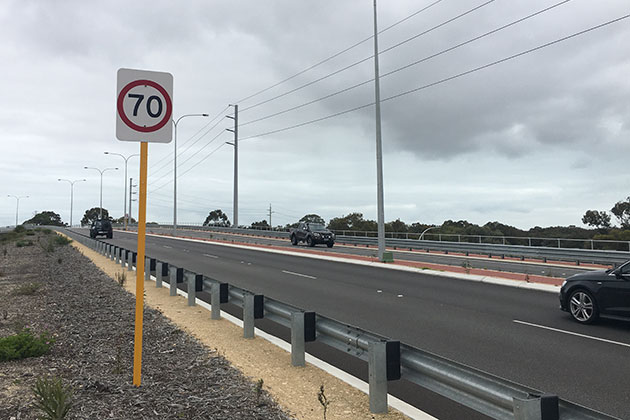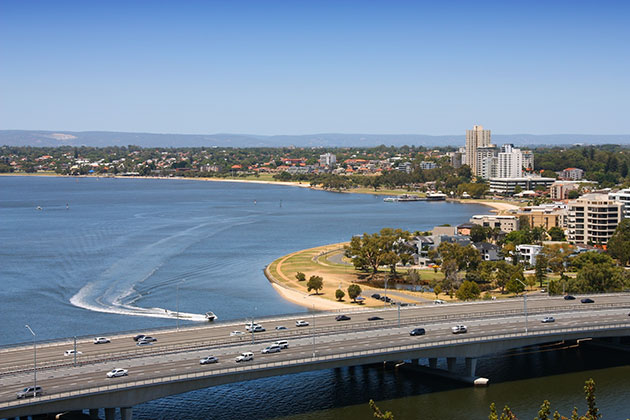Can you be fined for travelling lower than the speed limit?
In a freeway speed zone, you must not drive at a speed greater than 20 km/h below the speed limit in that zone. The exceptions are if traffic congestion prevents you from driving within 21 km/h of the limit, or if it’s unsafe to drive within 21 km/h of the speed limit. On other roads, you must not unreasonably obstruct the path of another driver, cyclist or pedestrian. That doesn’t include being stopped in traffic or simply driving at a lower speed than other vehicles, unless the speed is ‘abnormally’ slow in the circumstances and there is no need for the low speed.
Can I speed to get out of the way of an emergency vehicle?
Even if exceeding the speed limit will get you out of the way faster, you must not break any road rules to get out of the path of an emergency vehicle, such as an ambulance. It’s also not legal to run a red light in this situation.
When you see or hear lights and sirens you must give way to the vehicle and make every effort to give them a clear and uninterrupted path. Always indicate first to alert the driver of the emergency vehicle and other drivers around you of your intention. If you’re on a multi-lane road, indicate and move to the left side of the road as soon as you safely can. Drivers already in the left lane should make room for other vehicles trying to move left. If clearly directed by emergency services personnel, always comply, but be aware of the movement of traffic around you.

Driving slower means it will take longer to reach my destination.
You’ve probably experienced it many times - an impatient driver overtakes you to get ahead, only to have you pull up alongside them at the next set of lights.
It’s been well established that drivers overestimate the time they may save from travelling at higher speeds. Determining a driver’s travel time is actually quite complex and there are many factors apart from speed and speed limits that affect it such as whether you’re in an urban built-up area or on a rural road, the amount of traffic present, intersections and their controls (e.g. traffic lights) and other road features. In short, sometimes it will take longer, and sometimes it won’t.
If there’s a temporary sign showing a reduced limit due to roadworks but there are no workers on site, can I drive at the usual speed limit?
No. The speed limit on a roadwork sign is enforceable, even if there are no workers present. While it might seem like the surrounding environment is safe and clear and you’re not placing any workers at risk, a modified road layout, unsealed, or uneven road surfaces can be dangerous. Sometimes the risks associated with the work may not be clearly visible to a road user.

Where speed limits change from a higher to a lower speed, can you start to slow down after you pass the sign with a lower limit?
At the point where your car passes a speed limit sign you must already be travelling at that posted limit. Beginning to slow down as you pass the sign will mean you’re breaking the law for as long as it takes your car to slow down to the correct speed. So, keep an eye out for changing limits on the road ahead.

Is it okay to exceed the speed limit by a few kilometres?
Even a few kilometres is still breaking the law. A few kilometres may not seem like much, but for every few kilometres your speed increases, so too does your risk of seriously injuring yourself or someone else. Your reaction time is reduced, and your braking distance is increased. Even small reductions in average speed can significantly reduce casualty crashes. Research has shown that increasing your average speed from 60km/h to 65km/h would double your chances of being involved in a crash in which someone is injured. Speed limits indicate the maximum speed you are allowed to travel at, not the speed you must always travel at. In situations such as wet weather or in areas of reduced visibility, make sure you drive to the conditions.
Are the electronic speed limit signs over Perth’s Smart Freeway just recommended speeds?
The illuminated signs over Perth’s Smart Freeway on the Kwinana Freeway northbound, show the legal speed limit at which you can travel at. Because the limit at which you can travel on that section of the freeway will vary, your speed needs to be adjusted accordingly. In the event that the signs are not operating, you should comply with the speed limit on the ‘when all signs blank’ sign which should be displayed on or near the carriageway.

When I pass an incident response vehicle I just need to slow down, I don’t need to slow to a specific speed.
The emergency response and roadside workers that attend crashes and incidents are regularly faced with the risks that come with working by the side of a road. When approaching an incident response vehicle which is stationary and displaying flashing lights, the Slow Down, Move Over (SLOMO) law requires drivers to slow down to a speed at which the driver could, if necessary, stop safely before passing the incident response vehicle, and must not pass at a speed which is more than 40 km/h. If it’s safe to do so and there are multiple lanes in the same direction, drivers must move over to another lane to give incident responders more room.
Get going with RAC Go
Change your backseat driver for a better one. Download RAC Go, the app designed to help you monitor and improve your driving behaviour with fun challenges. And it’s free!
